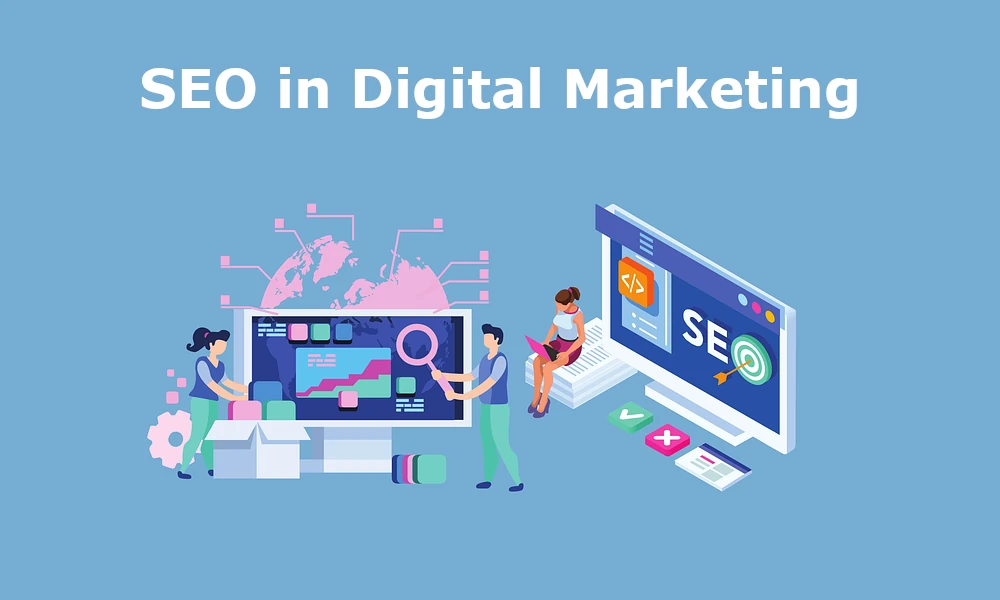In the ever-evolving landscape of digital marketing, the seamless integration of content marketing stands as a linchpin for success. Beyond mere aesthetics, content marketing plays a pivotal role in shaping a brand’s online presence. This article aims to delve into the intricacies of integrating content marketing into a digital strategy, providing insights and a roadmap for businesses to stay ahead in the dynamic digital realm.
Defining Your Goals
Before embarking on the journey of integrated content marketing, it’s imperative to define clear and concise goals. As outlined in the blog on “5 Steps for Creating an Integrated Content Marketing Strategy,” the initial step involves meticulous goal-setting. Whether it’s enhancing brand awareness, driving traffic, or fostering audience engagement, a well-defined roadmap is the foundation of a successful content marketing strategy.
Understanding the Role of SEO in Digital Marketing
It’s crucial to recognize the symbiotic relationship between SEO and content strategy. SEO is the driving force that propels content to the forefront of digital visibility. Crafting content with SEO principles in mind not only boosts search engine rankings but also amplifies the impact of your digital marketing efforts.

Developing a Content Strategy
In the intricate tapestry of digital marketing, developing a robust content strategy is a cornerstone. Referencing our blog on “How to Develop a Content Strategy in 7 Steps,” this section explores the step-by-step process of crafting a content strategy. From defining your target audience to selecting the right channels, a well-crafted content strategy sets the stage for successful integration within your broader digital marketing framework.
Exploring Digital Marketing Strategies
Diving into the extensive realm of digital marketing strategies, as highlighted in our blog on “Digital Marketing: A Comprehensive Guide,” unveils a myriad of options. Integrated content marketing acts as the cohesive thread that ties together various strategies such as social media marketing, email campaigns, and influencer collaborations. Understanding how content fits into each strategy is essential for a harmonized approach.
Benefits of a Content Marketing Strategy
In the dynamic realm of digital marketing, a well-crafted and documented content marketing strategy serves as the linchpin for achieving sustained success and meaningful results. Let’s delve into the tangible benefits that emanate from having a clear roadmap for your content efforts:
Fostering Brand Loyalty:
- Building a Consistent Brand Voice: A documented content marketing strategy ensures consistency in brand messaging, tone, and style across various channels. This consistency fosters a strong brand identity that resonates with your audience, building trust and loyalty over time.
- Addressing Audience Needs: A strategic content plan enables you to consistently deliver valuable and relevant content that addresses the needs and pain points of your target audience. By providing solutions and insights, you position your brand as an authority and build a loyal following.
Generating Organic Traffic:
- Optimizing for Search Engines: With a documented content marketing strategy, you can integrate SEO principles seamlessly into your content creation process. This optimization helps your content rank higher on search engine results pages (SERPs), driving organic traffic to your website.
- Long-Term Visibility: Consistent and high-quality content contributes to long-term visibility. As search engines recognize the relevance and reliability of your content, your brand gains authority, attracting organic traffic even as algorithms evolve.
Enhancing Digital Presence:
- Multichannel Engagement: A documented strategy guides the creation and distribution of content across various digital channels. Whether it’s through blog posts, social media, email campaigns, or multimedia content, your brand maintains a robust and engaging online presence.
- Adaptability to Trends: Staying relevant in the fast-paced digital landscape requires adaptability. A documented strategy allows you to incorporate emerging trends and technologies, ensuring your brand remains at the forefront of your industry.
Measurable Results and ROI:
- Setting Clear Objectives: Documenting your content marketing strategy involves setting clear and measurable objectives. Whether it’s increasing website traffic, lead generation, or conversion rates, having predefined goals allows for accurate performance tracking.
- Analyzing Key Metrics: With a strategy in place, you can leverage analytics tools to track the performance of your content. Analyzing key metrics such as engagement rates, conversion rates, and audience demographics provides valuable insights, enabling data-driven adjustments for continuous improvement.
Strengthening Audience Relationships:
- Personalized Experiences: A well-executed content strategy allows for the creation of personalized and targeted content. Tailoring your messaging to specific audience segments enhances the relevance of your content, deepening the connection between your brand and its audience.
- Encouraging User Interaction: Engaging content encourages audience participation through comments, shares, and discussions. This two-way interaction not only strengthens relationships but also provides valuable feedback that can inform future content strategies.
Building an Integrated Content Marketing Strategy
Creating a successful integrated content marketing strategy is akin to architecting a masterpiece. This section serves as a practical guide, emphasizing the criticality of setting tangible goals and walking through the essential steps to craft a cohesive and integrated content marketing strategy that seamlessly aligns with overarching business objectives. Let’s break down the process into actionable steps:

Understand Your Audience:
- Create Audience Personas: Develop detailed audience personas to understand the demographics, preferences, and pain points of your target audience. This insight informs content creation, ensuring it resonates with and addresses the needs of your audience.
- Identify Content Touchpoints: Map out the customer journey to identify key touchpoints where your audience interacts with your content. This understanding enables you to tailor content for each stage of the buyer’s journey.
Content Mapping and Alignment:
- Align with Customer Journey: Map your content to the various stages of the customer journey—awareness, consideration, and decision. Each piece of content should serve a specific purpose in guiding the audience through the buying process.
- Cross-Channel Consistency: Ensure consistency in messaging and branding across different channels. Whether it’s your website, social media, or email campaigns, a unified brand voice fosters a seamless and integrated experience for your audience.
Select Relevant Content Channels:
- Choose Platforms Wisely: Identify the channels where your audience is most active. Whether it’s social media platforms, blogs, podcasts, or video content, tailor your strategy to leverage the channels that align with your audience’s preferences.
- Diversify Content Formats: Experiment with diverse content formats to cater to different audience preferences. This could include blog posts, infographics, videos, webinars, and interactive content.
Measurement and Analysis:
- Define Key Performance Indicators (KPIs): Clearly define KPIs that align with your goals. These could include metrics like website traffic, engagement rates, conversion rates, and social shares.
- Regular Performance Reviews: Regularly analyze the performance of your content against established KPIs. Use analytics tools to gain insights into what’s working well and where adjustments are needed.
Iterate and Optimize:
- Continuous Improvement: An integrated content marketing strategy is a dynamic entity. Continuously assess and iterate your strategy based on performance data and changing market dynamics.
- Feedback Loop: Encourage feedback from your audience and internal stakeholders. This feedback loop provides valuable insights for refining your strategy and ensuring it stays relevant.
Utilizing Video Marketing in Content Strategy
In the dynamic world of digital content, video marketing takes center stage. From capturing audience attention to conveying complex messages, integrating video into your content strategy is pivotal for modern brands.
Conclusion
In conclusion, the integration of content marketing into a digital strategy is not merely a choice but a strategic imperative. Summarizing the key points discussed, this article underscores the significance of a well-crafted content strategy as the driving force behind a successful digital marketing campaign. As businesses navigate the ever-evolving digital landscape, the integration of content marketing stands tall as a beacon guiding them toward sustained success.
About Rezaid
Rezaid Global is a Digital Marketing Agency that creates and executes cutting-edge digital strategies for companies far and wide. Our work, driven by a passion for technological architecture, extraordinary visual design and ultimately aimed at ensuring your success. Our team creates custom software and online promotion packages designed specifically for small enterprises (SMEs) operating within Manchester and beyond, with customized packages to match their business needs.
Contact us if you have any questions regarding our services.


